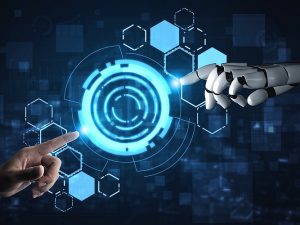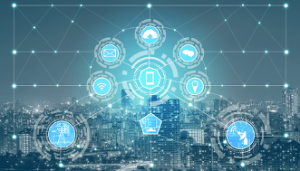
The speed at which technology evolves presents many challenges for the federal government, the first being the actual acquisition of solutions. Government procurement processes and policies have had to adjust and evolve to enable agencies to buy and implement the emerging technologies that support their mission.
Utilizing Existing Platforms
The Federal Risk and Authorization Management Program (FedRAMP) may be the largest and most visible example of this evolution, allowing agencies to securely acquire cloud solutions. The program is being used as a platform to ensure that other transformative technologies, like the cloud, can securely make their way into government systems. The Emerging Technology Prioritization Framework provides guidance on how cloud service providers can request their emerging tech-powered products be prioritized and then implemented. The initial focus will be on artificial intelligence (AI) solutions, focusing on chat interfaces, code generators and debugging tools, image generators, and associated application program interfaces. Continue reading


 The Department of Veterans Affairs (VA) is keenly focused on improving the healthcare and general services that support our military veterans. Incumbent on these improvements is the integration of leading edge technologies that digitize and automate processes for efficiency along with important security enhancements.
The Department of Veterans Affairs (VA) is keenly focused on improving the healthcare and general services that support our military veterans. Incumbent on these improvements is the integration of leading edge technologies that digitize and automate processes for efficiency along with important security enhancements. Artificial Intelligence is being implemented across government to modernize and automate traditional manual processes. For many organizations, this means taking paper-based, tedious, error-prone tasks and turning them over to a machine for automated completion. Beyond using AI to hand off tasks best completed by machines -- those that are rote and repetitive -- agencies are also looking at ways to introduce the technology into already complex human-driven activities to make them even more effective and efficient.
Artificial Intelligence is being implemented across government to modernize and automate traditional manual processes. For many organizations, this means taking paper-based, tedious, error-prone tasks and turning them over to a machine for automated completion. Beyond using AI to hand off tasks best completed by machines -- those that are rote and repetitive -- agencies are also looking at ways to introduce the technology into already complex human-driven activities to make them even more effective and efficient. Human Resources (HR) in government has always been complex. From very specific hiring criteria to security clearances to battling the stereotypes of government work, it's never been a task for the faint of heart. Then came a global pandemic. HR departments had to quickly pivot to serve a remote workforce and find ways to continue filling positions critical to the government response to COVID-19.
Human Resources (HR) in government has always been complex. From very specific hiring criteria to security clearances to battling the stereotypes of government work, it's never been a task for the faint of heart. Then came a global pandemic. HR departments had to quickly pivot to serve a remote workforce and find ways to continue filling positions critical to the government response to COVID-19.

